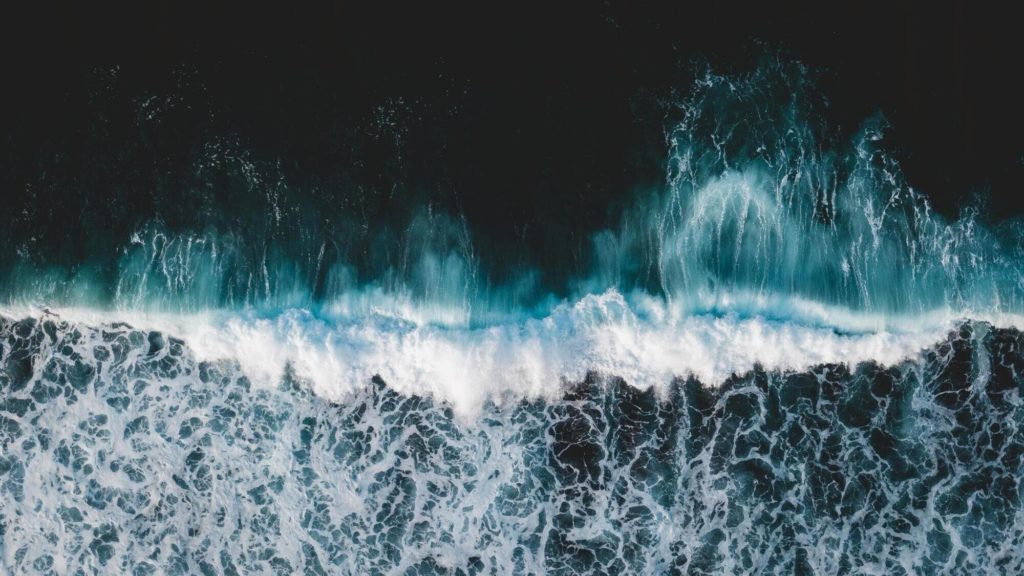
Parental Note: This experiment is geared towards ages 8 and up. The project may require adult assistance with heating up and pouring hot water.
Additional Note: This experiment will take roughly 45 minutes to complete. The ice cubes should be prepared and frozen the night before performing the experiment.
Experiment Overview:
The ocean is constantly in motion. If you’ve ever been to the beach, you may have experienced playing in the waves and getting sucked out to sea by surface ocean currents. Those water movements are mostly caused by wind interacting with the surface of the ocean, but did you know that ocean water is always moving, even in the deepest parts of the ocean? But how can the water move at the bottom of the sea if there’s no wind to push it?
Deep ocean currents are caused by a process called convection, which is when fluid moves as a result of changes in temperature. It is a type of energy transfer that involves the movement of heat.
Earth’s poles (the Arctic in the north and Antarctica in the south) are covered in ice. During the summer months, some of that ice melts and enters the ocean as cold, fresh water. Generally, the waters closer to the poles, such as the Norwegian sea, contain cold water. The waters closer to the Equator are much warmer. These temperature differences are what create ocean currents. In this experiment, you will place blue-dyed ice cubes and red-dyed warm water in a container with room-temperature water to demonstrate how ocean currents move water around the planet. See if you can observe a real-life convection current taking place!
Before beginning, think about the following questions and write down your predictions:
- What do you think will happen to the cold (blue) water when you add it to the container?
- What do you think will happen to the warm (red) water when you add it to the container?
- What do you think will happen if the warm (red) water comes into contact with the cold (blue) water?
Experiment Materials:
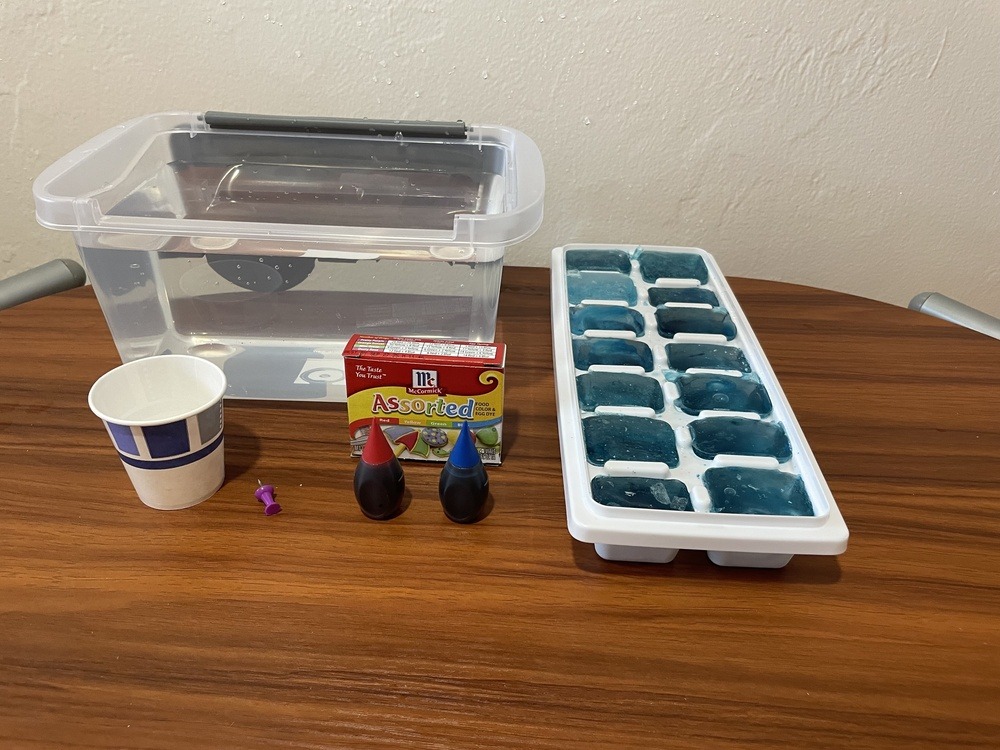
- One medium or large clear container
- Red and blue food coloring
- Small dixie cup
- Thumbtack
- Ice cube tray
- Stove and teapot
Experiment Process:
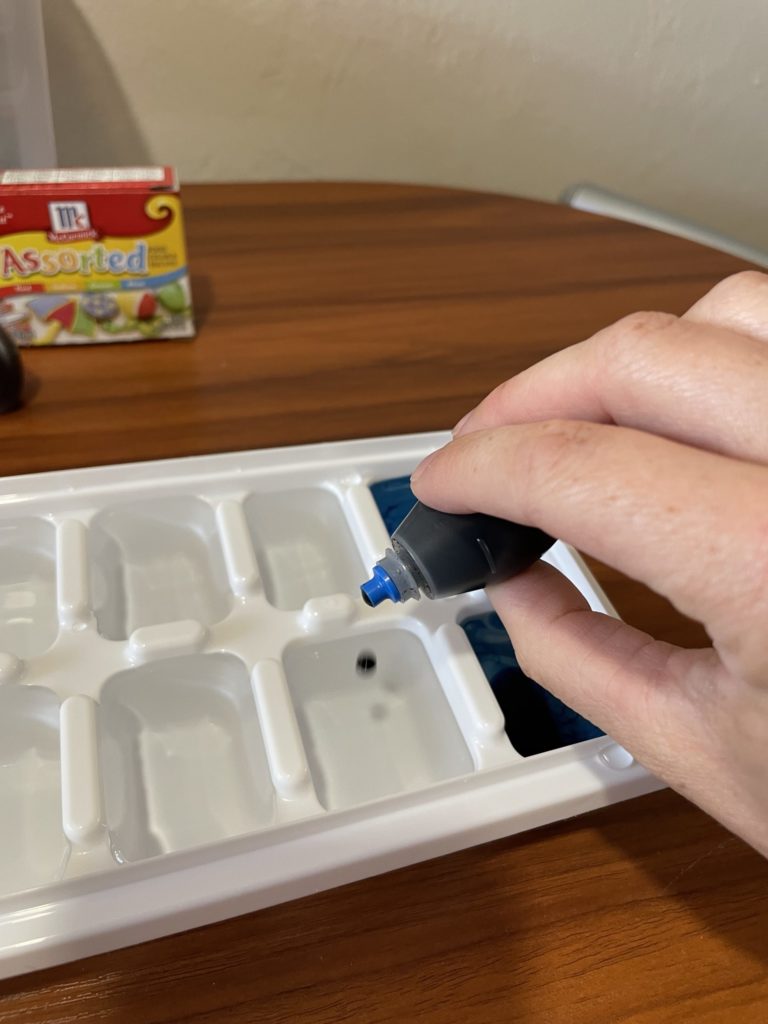
Step 1
Prepare the blue ice cubes. Fill an ice cube tray with water and place one drop of blue food coloring into each square. Gently mix with one finger, then carefully place in the freezer for a few hours or overnight.
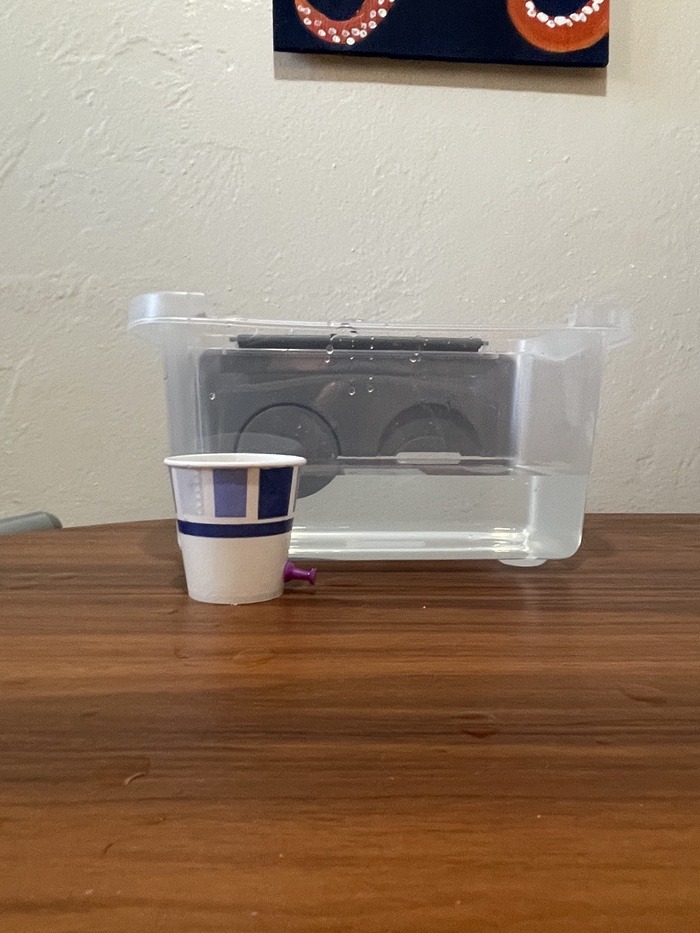
Step 2
Once the ice cubes are frozen, you can start setting up the rest of the experiment. Fill a medium-sized, clear container with room temperature water. To decide how high to fill the container, place the dixie cup next to the container and stop filling before the water level reaches the height of the top of the cup.
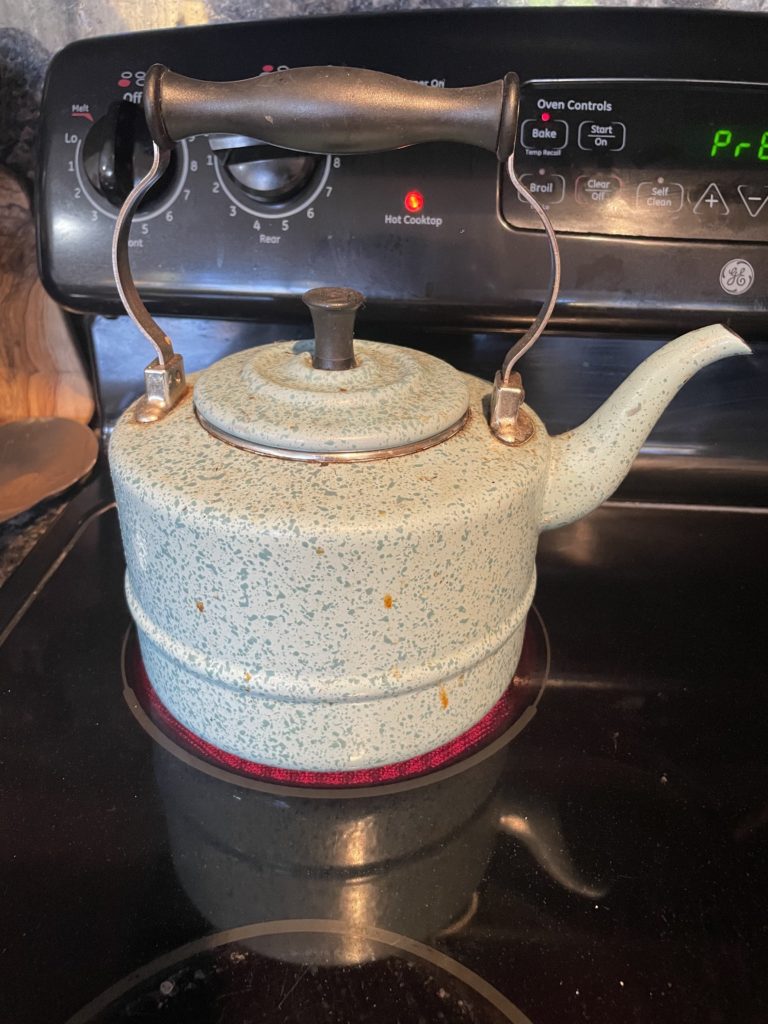
Step 3
With an adult’s supervision, heat some water in a teapot on the stove. The water does not have to be boiling, but just much warmer than the room temperature water.
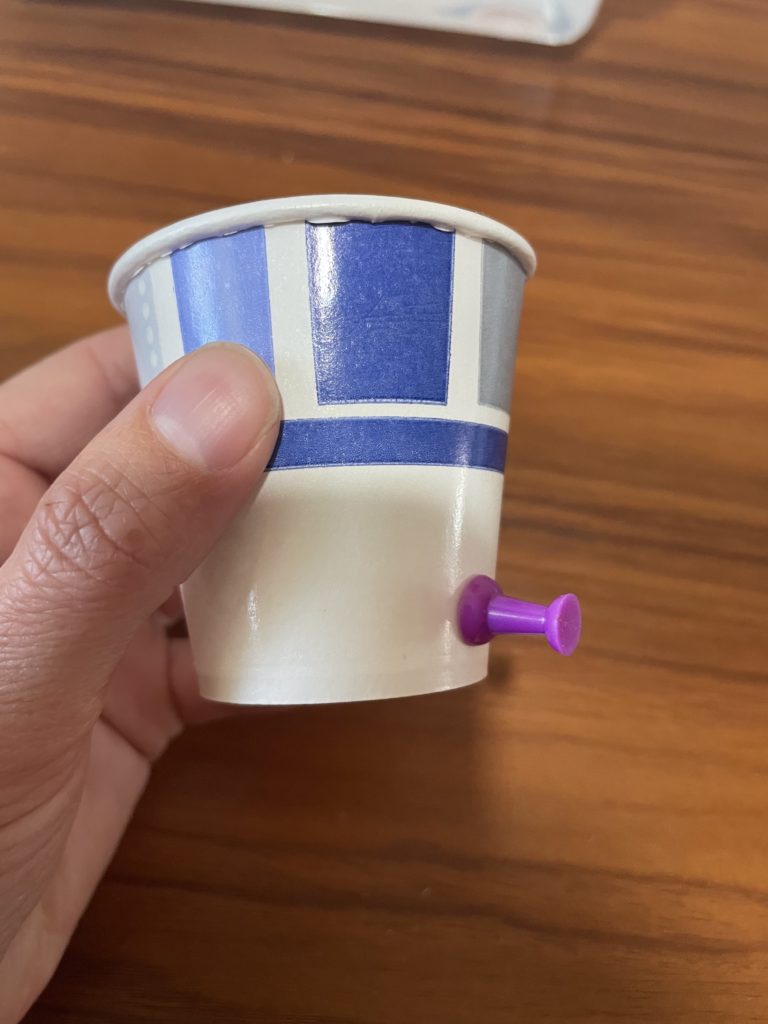
Step 4
Stick the thumb tack into the side of the dixie cup near the bottom. Then, place 3-4 drops of red food coloring in the dixie cup, then fill it with the hot water.

Step 5
Carefully place the cup of hot water into the clear container on one side. Make sure the water level of the room temperature water in the container is not higher than the dixie cup, or the red/hot water will spill out the top.
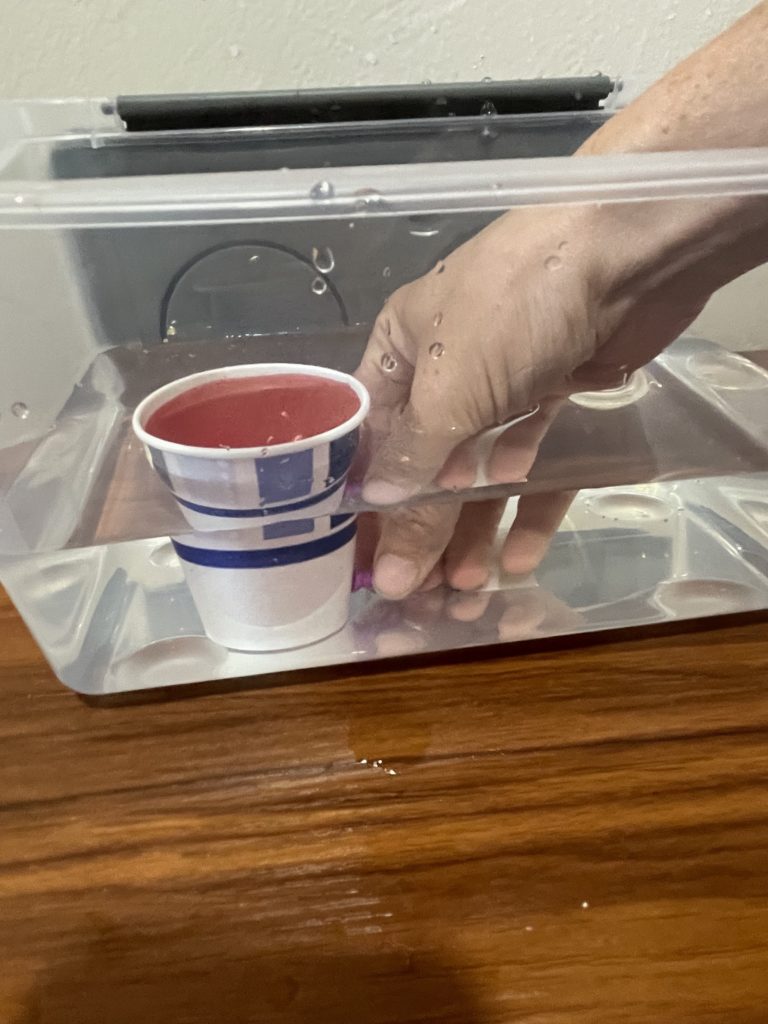
Step 6
Remove the thumbtack from the cup and observe what happens.
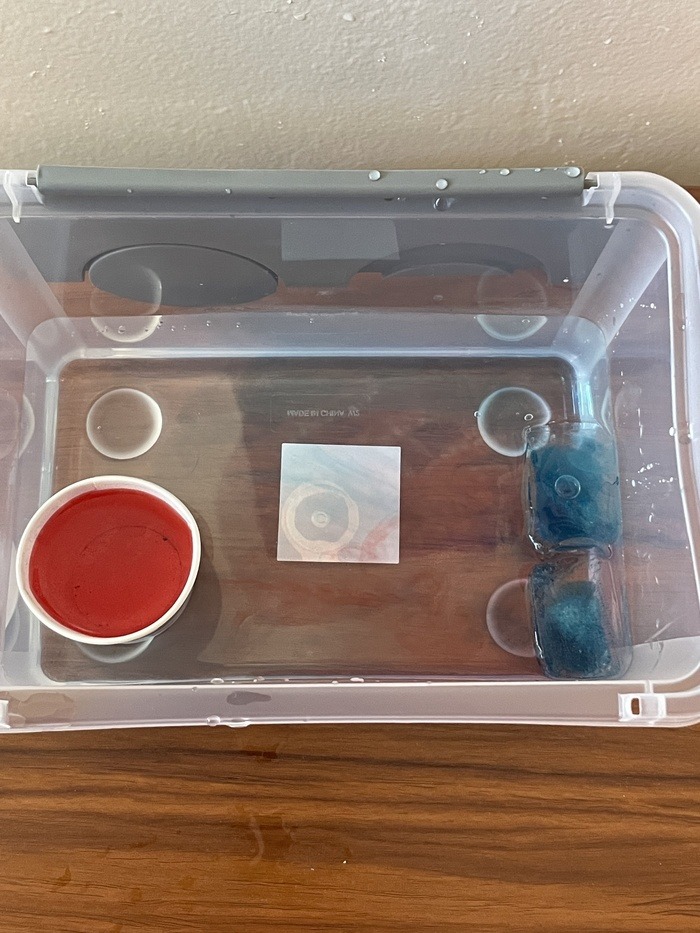
Step 7
Add one or two of the blue ice cubes to the other side of the container and observe what happens.
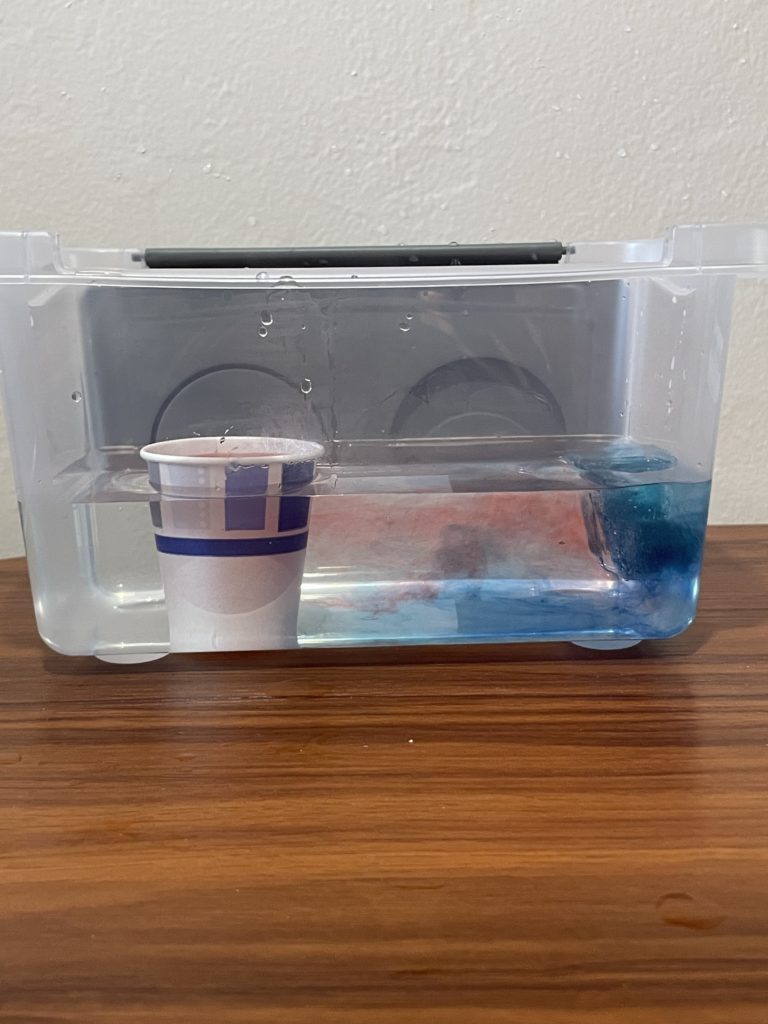
Step 8
Let the experiment run for a few minutes and take notes about what you notice happening inside of the container. How is the red water moving? How is the blue water moving?
Share Your Results
- What happened to the hot water in the cup when you took away the thumb tack? Which direction did the water go? (e.g., down and over, up and over, up and then stopped moving, etc.)
- What happened to the cold water from the ice cube when you placed it into a container with room temperature water? Which direction did the water go? (e.g., down and over, up and over, up and then stopped moving, etc.)
- Which type of water moved faster, the hot/red water or the cold/blue water?
- What happened when the red/hot water came in contact with the blue/cold water?
Conclusions:
Ocean currents are like a gigantic river inside of the vast ocean. One of the major things that causes these ocean currents to move is the different temperatures of water within the ocean. In your experiment, you should have noticed that the red/hot water flowed out of the cup and into the container with the room temperature water. When this happened, the red/hot water then moved up to the surface of the container. This is because hot water is less dense than room temperature water. Density is a measure of how much mass there is within a given volume or amount of space (i.e. the container). Even though both the hot water and room temperature water are made up of the same molecules (two hydrogen atoms and one oxygen atom), when water is heated, it expands and its molecules move around more quickly. The water with the higher temperature will always take up more volume, and will be less dense, causing it to rise to the surface.
When the blue ice cubes were added into the container, you should have noticed that the ice cube started to melt into liquid water, and that cold water sank to the bottom of the container. This is because cold water is more dense than room temperature water. Its molecules move more slowly and take up less volume. As more hot water flowed out of the cup and more ice melted and sank to the bottom, you should have noticed that the different colored waters started to flow into each other and mix. When this happened, it caused the cold water to heat up and the hot water to cool down, and you should have noticed some purple water in the container where this mixing was happening.
This experiment showed you how water moves throughout the deep ocean. In the ocean, this process acts like a gigantic conveyor belt. The ocean conveyor belt starts in the Norwegian Sea, where warm water from the Gulf Stream heats up the atmosphere in the cold northern latitudes. This loss of heat from the ocean to the atmosphere causes the water to become cooler and denser, causing it to sink to the bottom of the ocean. When that cold water sinks, it brings oxygen from the surface down to the bottom of the ocean. As more warm water is transported north, the cooler water sinks and moves south to make room for the incoming warm water. This cold bottom water flows south of the equator and makes its way down to Antarctica. Eventually, the cold bottom waters return to the surface through mixing and wind-driven upwelling, continuing the conveyor belt that encircles the globe. These movements are part of what keeps the ocean habitable for marine life, such as fish, allowing them to take in oxygen throughout the ocean with their gills.
Extension:
Convection currents, such as the ones found in the ocean, are movements of heat energy caused by differences in temperature. This can occur in any type of fluid, such as water or air. Can you think of any examples of convection taking place in your home? Hint: think about the way temperature is controlled inside of your house.
You can also try out this candle-powered carousel experiment to learn more about convection!









